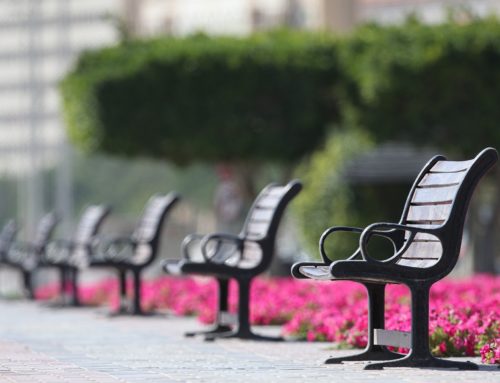Once upon a time, office spaces were designed to bring people together. But current social distancing recommendations mean there’s now an emphasis on separation. So, how do you handle office space design that encourages collaboration – while reducing risk of virus transmission? Here are four tips.
Prioritize solitude.
People often think of collaboration and instantly envision a close huddle of heads, working side-by-side, cheek-to-cheek as they race to solve the world’s problems (or, at least their customers’ problems). But effective collaboration actually requires a good amount of solitude.
Harvard Business Review put it this way: “There’s a natural rhythm to collaboration. People need to focus alone or in pairs to generate ideas or process information; then they come together as a group to build on those ideas or develop a shared point of view; and then they break apart again to take next steps. The more demanding the collaboration task is, the more individuals need punctuating moments of private time to think or recharge.”
In other words, you can improve workspace design and productivity by finding a balance of social and private space, so all of these important needs are met.
Make it inviting.
When your intention is to celebrate collaboration in safe ways, it’s important to do the thinking for your team members. If you have a lounge that employees like to enjoy for breaks, use clever social distancing graphics to lighten up the situation and remind everyone to keep their distance. Or, place beanbags with at least six feet between them, to allow individuals to spend time together while safely spaced apart.
Also, think about the lighting. It might seem tangential, but the right lighting and warm colors can boost attitudes and improve productivity. This is especially important when world events and mandatory person-to-person distancing are bound to make people feel down… and grumpy… and irritable.
Go small for big impact.
We’ve learned that the transmission of COVID-19 tends to thrive in larger crowds in close quarters, so bringing together smaller groups helps circumvent those risk factors. Seek out opportunities in your office space design to make use of conference rooms for smaller groups, or pods for collaboration. Spread people out by spacing out chairs and using compelling signage, or use a scheduling tool to ensure team members don’t exceed maximum occupancy for certain rooms.
Breathe in the (fresh) air.
The great outdoors are called great for a reason – or several reasons. Breathing fresh air does something good for your body (and soul), and soaking up Vitamin D from the sunshine is a known mood booster. Being outside seems to re-energize most people, too, so why not move your collaborative meetings outside? This is also a fantastic way to avoid breathing the same air that others are breathing in a confined space (another risk factor).
So, consider creating an open-air meeting space. Even if you’re in the midst of a concrete jungle, you can make use of balconies, terraces or courtyards. Bring in some live plants or vines, get a waterfall fountain to add some nature vibes and put in seating that’s spaced out appropriately. You might be surprised by how much this sort of space can get employees’ brains whirring and productivity humming.
Looking for more ideas about how to design office space for collaboration in the COVID-19 (and post-COVID) world? Contact us any time!





Leave A Comment